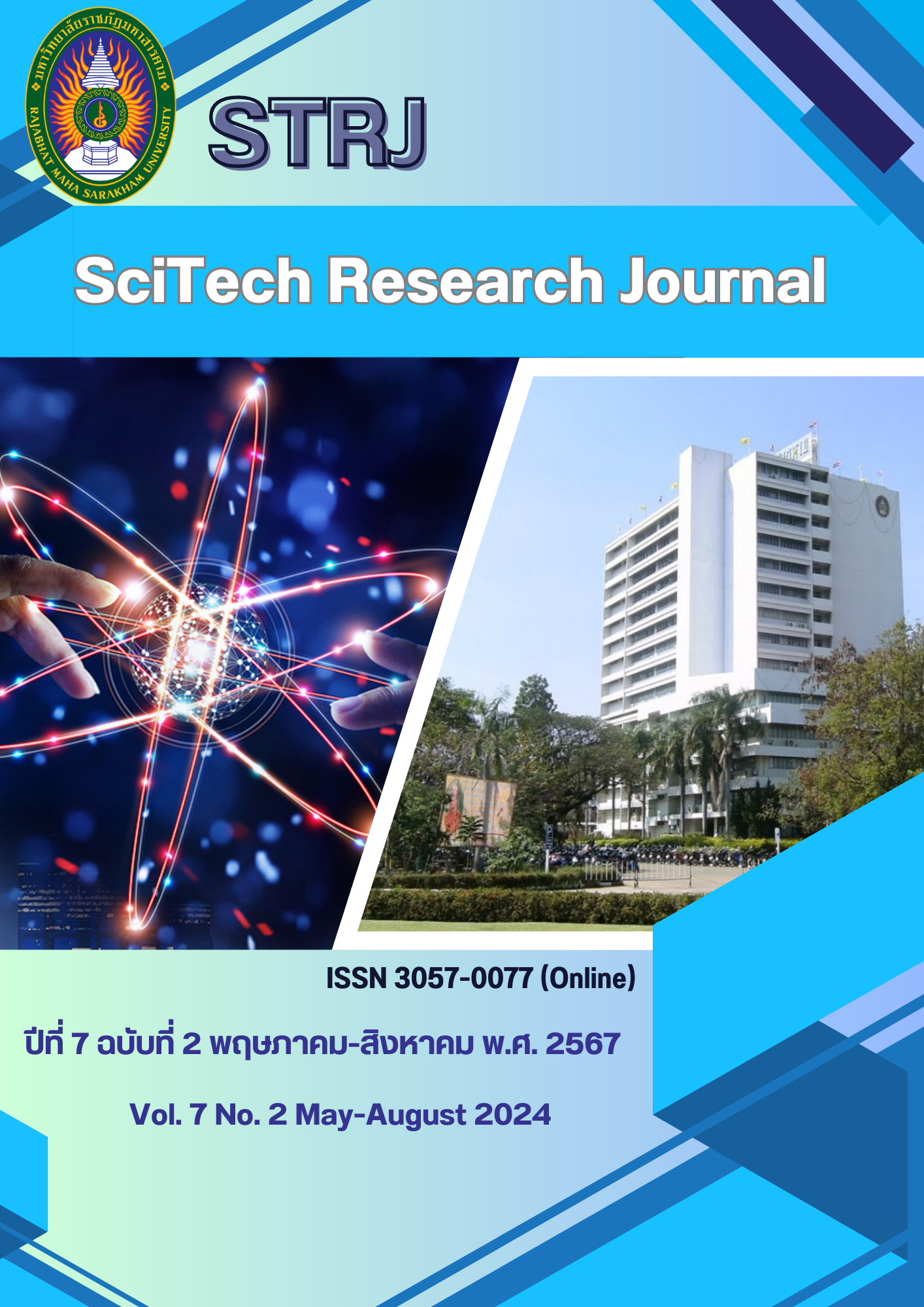Comparison of Firing Temperature on Physical Properties of Copper red Glazes by Automation Shuttle Kiln in Reduction Atmosphere
Keywords:
Glaze, Copper, Firing Temperature, Physical Properties, Reduction AtmosphereAbstract
The objective of this study was to study firing temperatures on the physical properties of copper red glazes for ceramic products. The experiment started with the Seger formula containing basic groups of 0.2mole Feldspar (K2O×Al2O3×6SiO2), 0.1mole Calcium carbonate (CaCO3), 0.1mole Barium carbonate (BaO) and 0.6-mole Zinc oxide (ZnO), the media group of 0.25 – 0.40mole Aluminum oxide (Al2O3) and an acid group of 2.0 – 4.0 mole Silicon dioxide (SiO2), coloring agent 0.3% copper carbonate (CuCO3) and 6%Tin oxide (SnO2). The copper red glaze was used in ground forms (ground for 4 hours) as an additive in the Seger formula for firing at 1250 and 1280°C. The firing condition in the reduction atmosphere can be divided into two parts. In the first part, the firing condition and atmosphere appear red color. A suitable firing condition for copper red glazes was a reduction from 950°C to 1250°C, reduction to natural firing to maximum temperature, and soaking at the highest temperature for 15 minutes.
The second part of the firing condition for copper red glazes was a reduction from 950°C to 1280°C, reduction to natural firing to maximum temperature, and soaking at the highest temperature for 15 minutes. The appearance of copper red glaze in formula 1 and 16 red colors, good melting, flow less, and not cracking, the glaze formula can be applied to the reduction firing process in an automatic kiln.
References
Aranyapak, S. (2010). Principles of Ceramic Glazes. Bangkok: Chulalongkorn University Press.
Dinsdale, A. (1986). Pottery Science. (1sted). Ellis Horwood Ltd., UK.
Hye-Jin, E., & Byung-Ha, L. (2013). Coloration characteristics of copper red glaze. Korean Journal of Materials Research, 23(7), 399-403.
Ingsiriwat, P. (1994). Ceramic Glaze Formulas Total. Bangkok: Odeonstore Printing Co., Ltd.
Lampang Provincial Office. (2021). Lampang Provincial Development Plan 5 years (2018-2022) Review Edition 2021, Provincial Development Strategy and Information Working Group.
Larsomsri, P. (2006). Effect of Tin Oxide Additive in Copper Red for Pottery Products. Master of Science in Industrial Chemistry, Faculty of Science. Chiang Mai: Chiang Mai University.
Larsomsri, P. (2009). Red copper glaze for pottery products. Bangkok: Odeonstore Printing Co., Ltd.
Mellor, J.W. (1963). “The Chemistry of the Chinese Copper-red Glazes”, Transactions of the British Ceramic Society, 1963.
Mitsuru, W., Nobuyuki, T. & Shingo I. (1986). Effect of heating and cooling atmospheres on colors of glaze and glass containing copper. Journal of Non-Crystalline Solids, 80(1-3), 412-421.
Mitsuru, W., Nobuyuki, T., Hiroki, N., Yoshiki O. & Shingo, I. (1986). Effect of furnace atmosphere on color of copper glaze condition of atmosphere to produce red copper glaze. Ceramic Association Magazine, 94(4), 387–392.
Shingo, I., Masahiko, H., Nobuyuki, T., & Mitsuru, W. (1987). Role of Sn2+ in development of red color during reheating of copper glass. Journal of Non-Crystalline Solids, 95(2), 790-800.
Tichane, R. (1998). Copper red glaze. USA: Krause Publication.
Wang, Y., Yu, S., Chu, J., Chen, D. & Chen, J. (2018). Study on the copper and iron coexisted coloring glaze and the mechanism of the fambe. Journal of Euro Ceramic Society, 38(10), 3681-3688.



